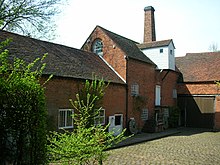Tolkien, Race and Cultural History
OCLC 3 | | |
Tolkien, Race, and Cultural History: From Fairies to Hobbits is a 2008 book by Dimitra Fimi about J. R. R. Tolkien's Middle-earth writings. Scholars largely welcomed the book, praising its accessibility and its skilful application of a biographical-historical method which sets the development of Tolkien's legendarium in the context of Tolkien's life and times. Major themes of the book include Tolkien's constructed languages, and the issues of race and racism surrounding his work.
The book won the
Context
Dimitra Fimi is a Greek scholar and author; she is a lecturer in fantasy and children's literature at the University of Glasgow.[5][6]
Book
Part I examines the origins of
.Part II explores the roots of Tolkien's thought in linguistics, and his linguistic aesthetic, involving the creation of constructed languages.
Part III analyses Tolkien's desire to create a world with its own history.
The text ends with an epilogue discussing Tolkien's transition from fairies to the far more down-to-earth hobbits. There are academic notes, a bibliography, and an index.
The book is illustrated with 13 monochrome images in the text, including historic depictions of fairies and elves, some of
The book appeared in hardback in 2008, and was reprinted in paperback in 2010.[7]
Awards
Tolkien, Race, and Cultural History won the
Reception
Literary development in its historical context

Mark Hooker, writing in the
Philip Irving Mitchell, in Christianity & Literature, similarly notes Fimi's historical contextualising. He finds it "terribly ironic" that Tolkien should have chosen Sarehole Mill, an early Industrial Revolution building, as the idealised symbol, the Old Mill in the Shire's central village, Hobbiton, for a lost idyll of rural England.[9]
Thomas Honegger, in Tolkien Studies, notes that Fimi uses a "biographical-historical" method, relating events in Tolkien's life and period to the development of his legendarium. He finds the text clear and informative, but in some places "not really new", as Tolkien's [then] unpublished writings and poetry were inaccessible; that made the biographical-historical method impossible to apply in full detail.[11]
Lori Campbell, writing in Modern Fiction Studies, adds that Tolkien's own "endless documentation of how he viewed his own work and its meaning" in his essays and letters supports Fimi's approach comparing fiction and biography. Campbell finds that the materials are skilfully used, as Fimi "deftly intertwines" Tolkien's words with the threads of history. She notes how Fimi explores Tolkien's "admiration" for Elias Lönnrot's Kalevala, a compilation of Finland's national mythology, and the matching desire in England for something similar.[12]
Race and racism in context
Campbell finds Part III "perhaps the most intriguing" section of the book, as myth turns to history, and men take centre stage, displacing elves. She notes that Fimi "helpfully exonerates" Tolkien from racism, offering arguments on historical and Middle-earth grounds, but that Fimi does not state that "dark" need not mean skin colour in Tolkien's writings; instead, Campbell writes, Tolkien's light and dark are "signifiers of goodness or its absence", relating to the light of the Silmarils and the Two Trees of Valinor. Mordor is black in lacking "things that are of the light, that is, belief, joy, imagination, and perhaps most importantly, diversity." In sum, she finds the book "both sophisticated and accessible", adding strength to Tolkien research.[12]
Mitchell writes that despite some traces of its doctoral thesis ancestry, the book is "rich in background and has the grace to avoid too much theoretical jargon." He notes that Part III occupies nearly half the book, and that its subject matter is well-developed. In his view, Fimi provides a "nuanced and quite balanced" analysis of race in the context of Tolkien's shifting attitudes, from his schoolboy views to his position on Nazi racism and words like "Aryan", "Nordic", and "peoples". In Mitchell's view, Fimi handles Tolkien's treatment of the human race, including "the Three Houses of Men, the "Swarthy Easterlings", the Númenórean and Gondorian view of blood, and the 'noble savages' that are the Wild Men of the Wood[s]" particularly well.[9]
Constructing languages
Henry Gee, in
References
- ^ Carpenter 1978, pp. 111, 200, 266 and throughout.
- ^ a b Straubhaar 2004, pp. 101–117.
- ^ Carpenter 2023, #29 to Stanley Unwin, #30 to Rütten & Loening, both 25 July 1938
- S2CID 162647975.
- ^ "Profile for Dr Dimitra Fimi - The Cardiff School of Education and Social Policy, Cardiff Metropolitan University". Archived from the original on 7 May 2018. Retrieved 6 May 2018.
- ^ "University of Glasgow - Schools - School of Critical Studies - Our staff - Dr Dimitra Fimi". University of Glasgow.
- ^ Fimi 2010, Front matter.
- ^ "The Mythopoeic Society: Mythopoeic Scholarship Award Finalists". Mythopoeic Society. Retrieved 25 March 2024.
- ^ .
- ^ Mythprint. 47 (9).
- ISSN 1547-3163.
- ^ JSTOR 26287265.
- Mallorn(47 (Spring 2009)): 13.
Sources
- ISBN 978-0-04928-039-7.
- ISBN 978-0-35-865298-4.
- OCLC 222251097.
- ISBN 978-0-8131-2301-1.
Further reading
- Barnes, Jon (10 July 2009). "Tolkien, Race and Cultural History". The Times Literary Supplement (5545): 27.
- Fisher, Jason (2010). "Tolkien, Race and Cultural History". Mythlore. 29 (111/112): 167=72.
- Johannesson, Nils-Lennart (2010). "Bring on the leprawns". .
- Simpson, Jacqueline (2010). "Tolkien, Race and Cultural History: From Fairies to Hobbits". .

